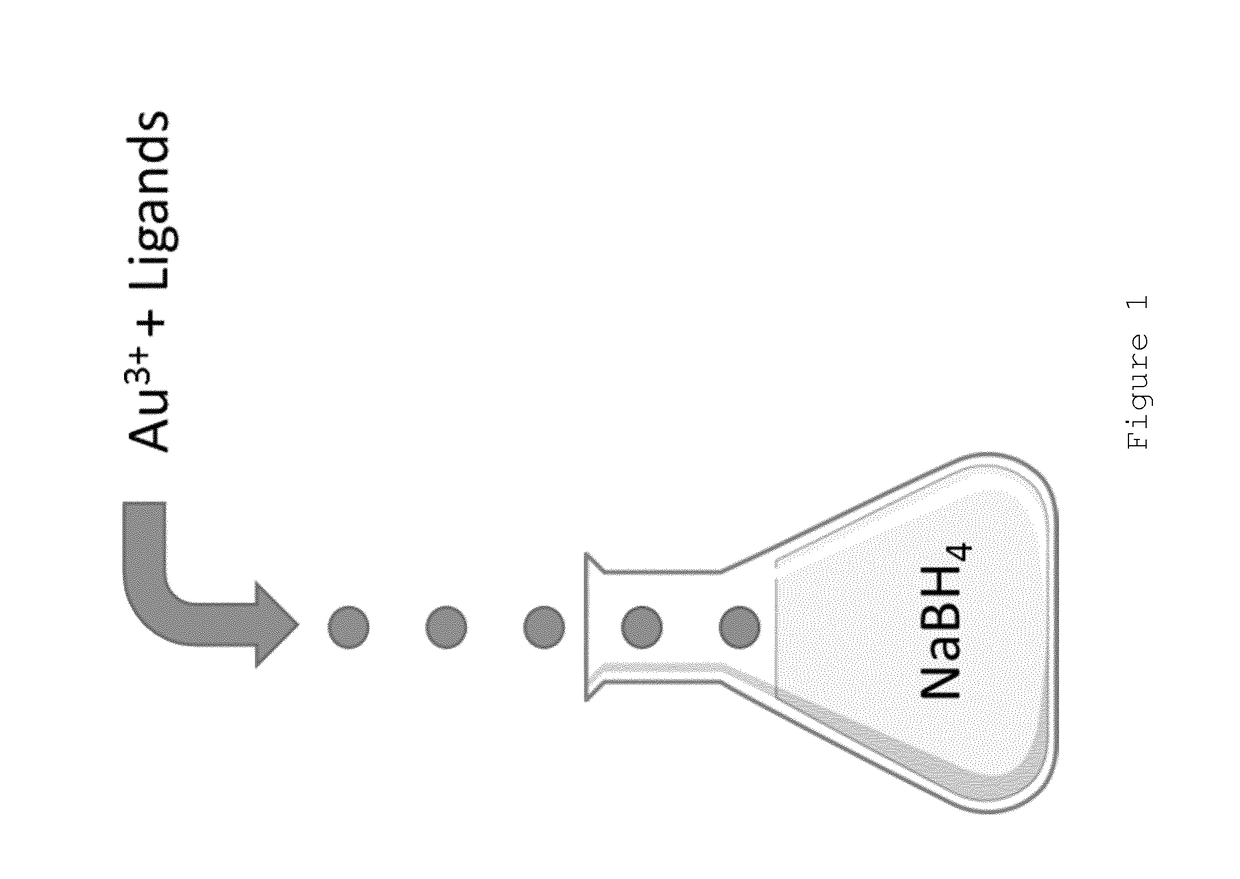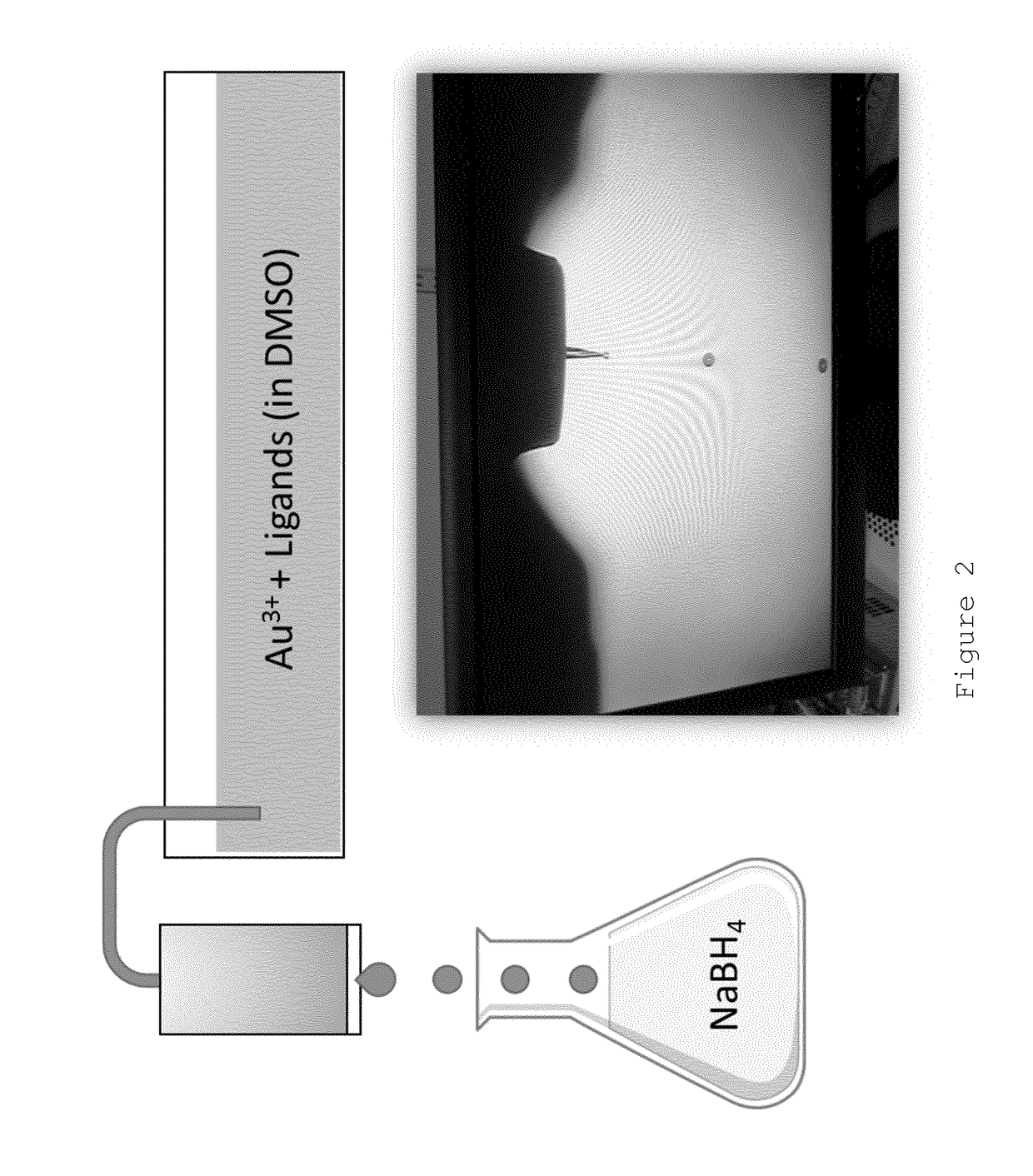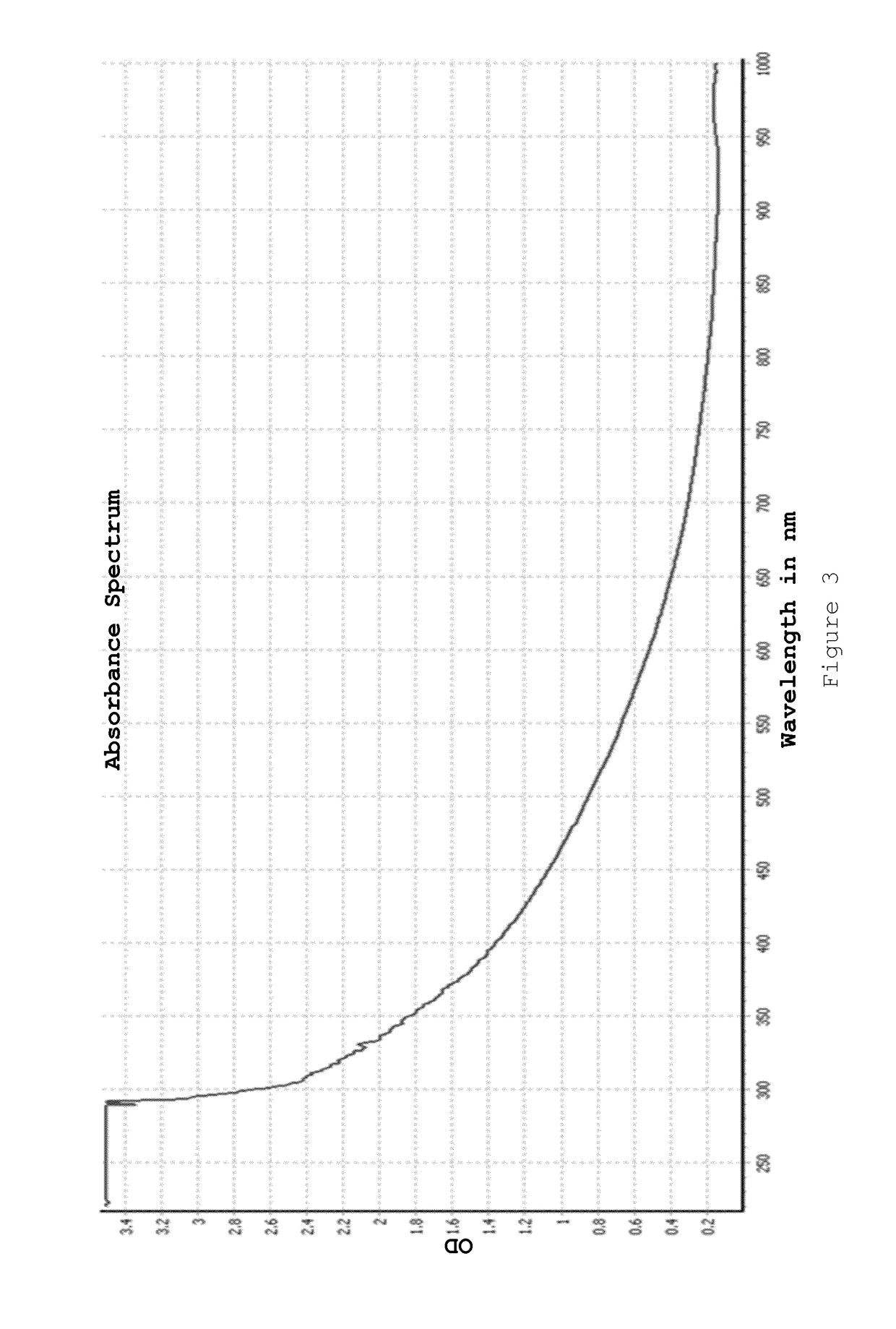Nanoparticle production
a nanoparticle and nanotechnology, applied in the field of nanoparticle production, can solve the problems of hydrogen gas production foaming control in the reactor, and achieve the effects of tighter size distribution, uniform nanoparticle properties, and rapid mixing
- Summary
- Abstract
- Description
- Claims
- Application Information
AI Technical Summary
Benefits of technology
Problems solved by technology
Method used
Image
Examples
example
Example 1—Piezoelectric Ejection-Based Synthesis of Gold Nanoparticles
[0080]A solution containing HAuCl4 ([Au3+] of 1 mg / ml), glucose-C2-disulphide (Au3+: Glucose-C2-disulphide 1:3 mole ratio) in DMSO was ejected from a single piezoelectric droplet generator using the following ejection conditions: 44V, 13 μs pulse, 50° C., n=4000 Hz. The droplets were ejected into a 12 mL vial containing 8 mL of an aqueous solution of NaBH4 at a concentration of 0.05M.
[0081]The resulting nanoparticles were isolated by Amicon ultracentrifugation after droplet ejection was complete. Meta-stable nanoparticles of appropriate size were produced (demonstrated by a very small plasmon band). It was found that these nanoparticles “ripened” overnight with the size increasing to a diameter of >8 nm (red colour observed). The present inventors believe that this indicates that the gold nanoparticle core was not fully capped with ligand at the point when the nanoparticles were isolated (i.e. the nanoparticles we...
PUM
 Login to View More
Login to View More Abstract
Description
Claims
Application Information
 Login to View More
Login to View More - R&D
- Intellectual Property
- Life Sciences
- Materials
- Tech Scout
- Unparalleled Data Quality
- Higher Quality Content
- 60% Fewer Hallucinations
Browse by: Latest US Patents, China's latest patents, Technical Efficacy Thesaurus, Application Domain, Technology Topic, Popular Technical Reports.
© 2025 PatSnap. All rights reserved.Legal|Privacy policy|Modern Slavery Act Transparency Statement|Sitemap|About US| Contact US: help@patsnap.com



